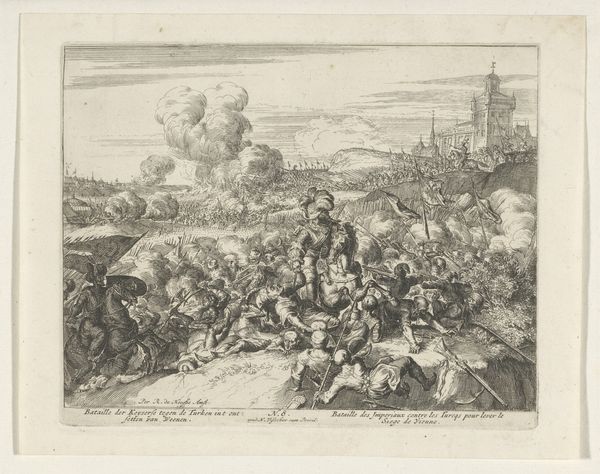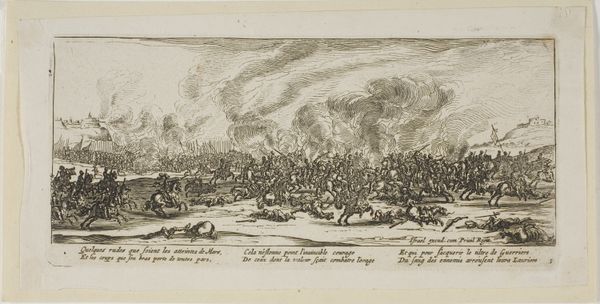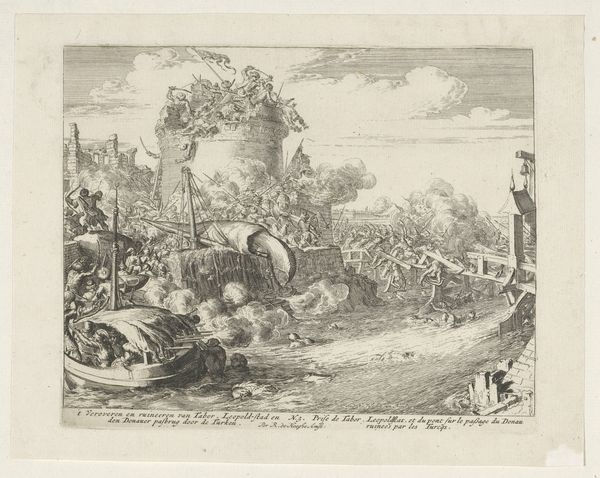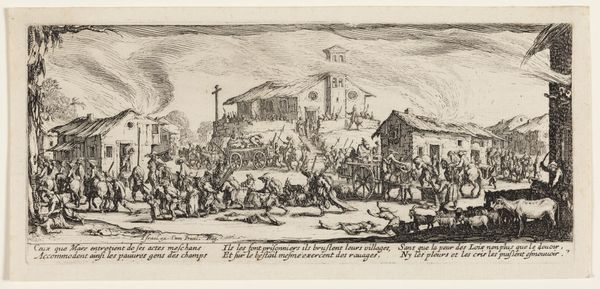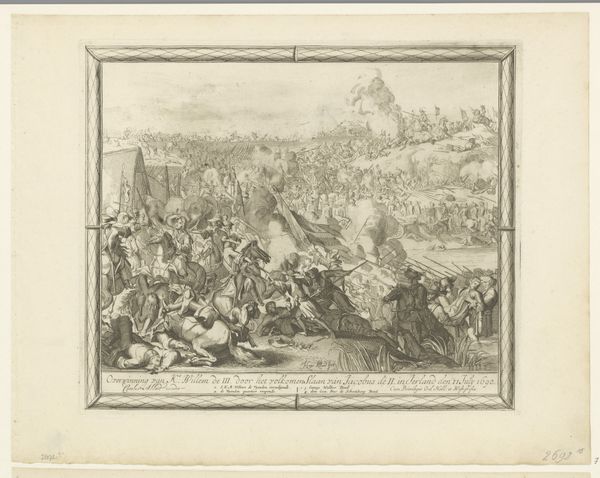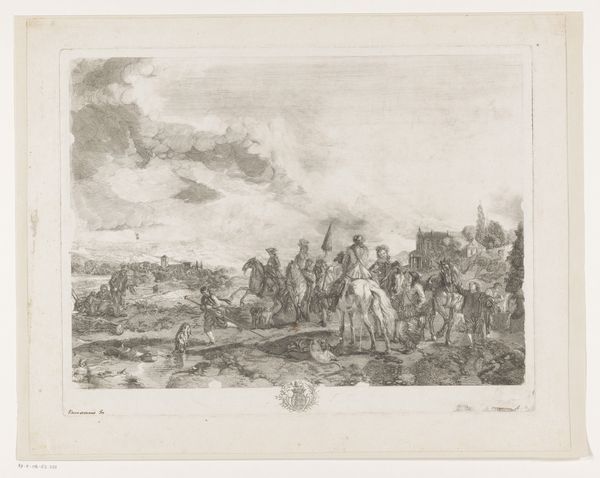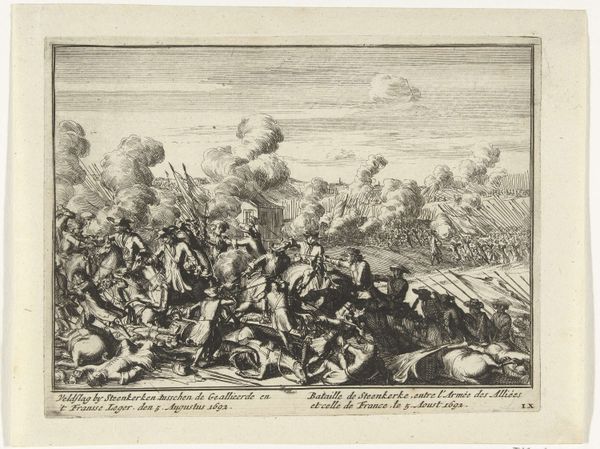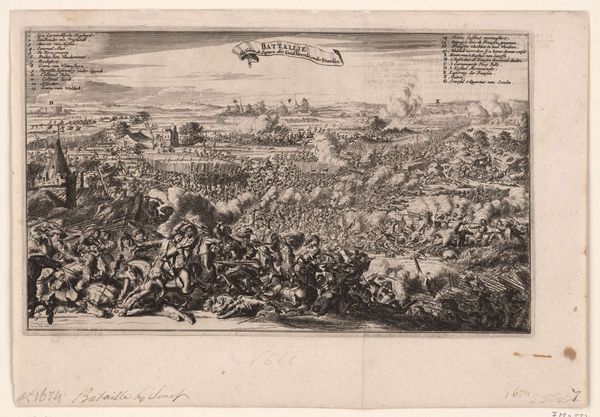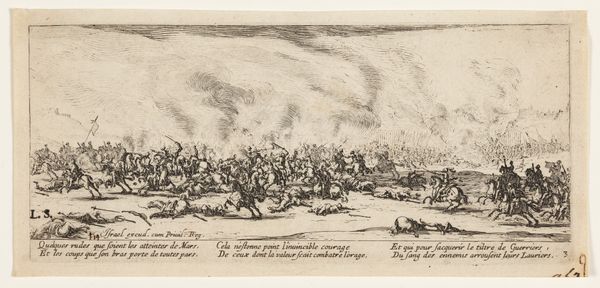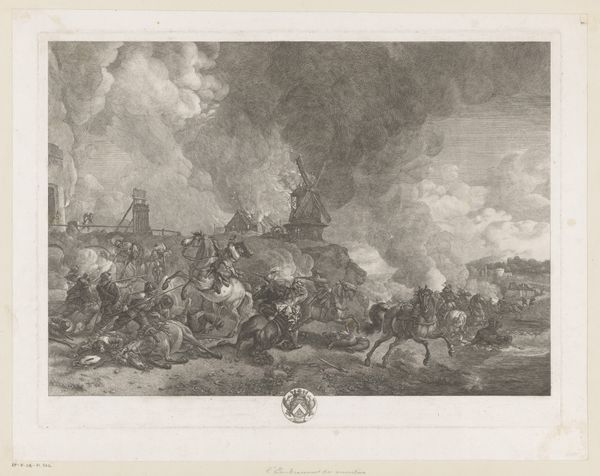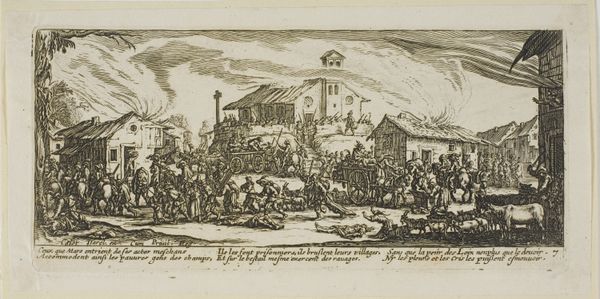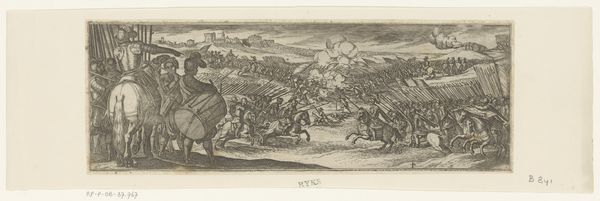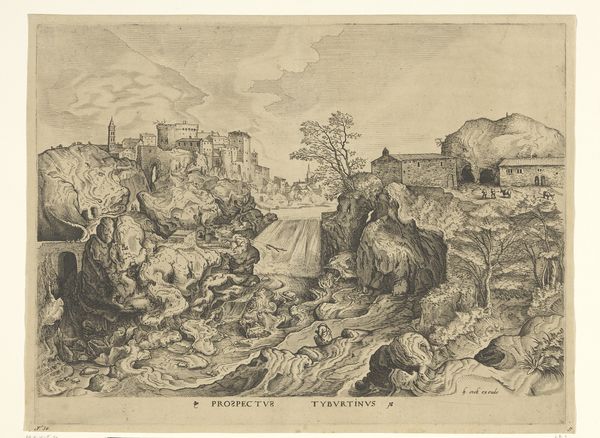
engraving
#
baroque
#
pen sketch
#
cityscape
#
history-painting
#
engraving
Dimensions: height 163 mm, width 203 mm
Copyright: Rijks Museum: Open Domain
Curator: Romeyn de Hooghe created this engraving titled "Loopgraven van de Turken voor Wenen," or "Trenches of the Turks before Vienna," in 1684. The Rijksmuseum houses this compelling piece. What strikes you first about it? Editor: It's gritty. Chaotic, even. The smoke billows, the lines are hurried, and there's this immediate sense of unease… like you’re right there, amidst the siege. I can almost smell the gunpowder. Curator: Precisely! The dynamism is striking, especially considering the medium. As an engraving, it relies heavily on line and texture to convey movement and the complexities of warfare. Note the sheer amount of labour visualized, both human and animal power used to transport artillery. Editor: It's not just about high art, is it? There’s something raw in the way De Hooghe depicts these siege lines. He really lays bare the grunt work, the supply lines…it's not just about the glory of battle, but the absolute means by which it’s waged. And the camels! Such fascinating details… makes me wonder about the cultural exchange – or rather, clash – that fueled these conflicts. Curator: Indeed. He provides visual access to labor, consumption, and imperial competition during the Baroque era, showing how advancements in artillery influenced the labor needed in military campaigns. It shifts the focus from the heroics of the commanders to the actual labor required. It is an impressive statement on the nature of military production. Editor: The more I look, the more I see, not just smoke and cannon fire, but something about resilience too. Vienna stood its ground, and even through this chaos, that underlying strength pulses through the image. A brutal scene, undeniably, but it holds this strange, defiant beauty as well. It invites contemplation on human capability, the grim side and perhaps... the inspiring side? Curator: Well said. De Hooghe, whether intentionally or not, allows for such readings. The historical weight mixed with an engagement in the messy business of material processes generates the piece’s resonance for contemporary viewers, still. Editor: Absolutely. It's a lot more than just an old battle scene isn't it. More of a mirror...reflecting our ongoing obsessions and concerns with power, process, and survival.
Comments
No comments
Be the first to comment and join the conversation on the ultimate creative platform.
